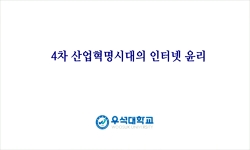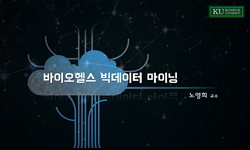휴대전화, MP3플레이어 및 PMP, USB 메모리 저장장치와 같은 개인용 멀티미디어 및 저장용 이동기기의 사용이 보편화되면서 이동기기에 저장되는 데이타에 대한 안전성이 요구되고 있다. 요구...
http://chineseinput.net/에서 pinyin(병음)방식으로 중국어를 변환할 수 있습니다.
변환된 중국어를 복사하여 사용하시면 됩니다.
- 中文 을 입력하시려면 zhongwen을 입력하시고 space를누르시면됩니다.
- 北京 을 입력하시려면 beijing을 입력하시고 space를 누르시면 됩니다.
https://www.riss.kr/link?id=A82299546
- 저자
- 발행기관
- 학술지명
- 권호사항
-
발행연도
2007
-
작성언어
Korean
-
주제어
개인정보 ; 플래시메모리 ; 안전한 파일 삭제 ; Privacy ; Flash Memory ; Secure Deletion
-
KDC
004
-
등재정보
KCI등재
-
자료형태
학술저널
-
수록면
422-426(5쪽)
-
KCI 피인용횟수
0
- 제공처
-
0
상세조회 -
0
다운로드
부가정보
국문 초록 (Abstract)
휴대전화, MP3플레이어 및 PMP, USB 메모리 저장장치와 같은 개인용 멀티미디어 및 저장용 이동기기의 사용이 보편화되면서 이동기기에 저장되는 데이타에 대한 안전성이 요구되고 있다. 요구되는 안전성 중 한 가지는 안전한 파일 삭제인데, 이것은 파일의 내용이 완전히 삭제되어 악의적으로 복구될 수 없도록 하는 것이다. 본 논문에서는 이동기기의 저장매체로써 주로 사용되는 플래시 메모리에서 어떻게 안전한 삭제를 할 수 있는지에 대하여 연구한다. 이를 위하여 0으로 덮어쓰기와 가비지 컬렉션을 이용하는 두 가지 안전한 파일 삭제 정책을 고려하였으며, 각 정책들이 플래시 메모리 파일 시스템의 성능에 미치는 영향을 분석하였다. 또한 두 가지 정책들의 장점을 취한 적응적인 파일 삭제 기법을 제안한다. 구체적으로 크기가 작은 파일들에 대해서는 0으로 덮어쓰기 기법을, 크기가 큰 파일들에 대해서는 가비지 컬렉션기법을 적용하였다. 그리고 실제실험 구현 및 결과를 통해 제안된 기법들이 안전하고 효율적으로 파일을 삭제할 수 있음을 보인다.
다국어 초록 (Multilingual Abstract)
Personal mobile devices equipped with non-volatile storage such as MP3 player, PMP, cellular phone, and USB memory require safety for the stored data on the devices. One of the safety requirements is secure deletion, which is removing stored data comp...
Personal mobile devices equipped with non-volatile storage such as MP3 player, PMP, cellular phone, and USB memory require safety for the stored data on the devices. One of the safety requirements is secure deletion, which is removing stored data completely so that the data can not be restored illegally. In this paper, we study how to design the secure deletion on Flash memory, commonly used as storage media for mobile devices. We consider two possible secure deletion policy, named zero-overwrite and garbage-collection respectively, and analyze how each policy affects the performance of Flash memory file systems. Then, we propose an adaptive file deletion scheme that exploits the merits of the two possible policies. Specifically, the proposed scheme applies the zero-overwrite policy for small files, whereas it employs the garbage-collection policy for large files. Real implementation experiments show that the scheme is not only secure but also efficient.
목차 (Table of Contents)
- 요약
- Abstract
- 1. 서론
- 2. NAND 플래시 메모리의 구조와 연산
- 3. 플래시 메모리 파일 시스템에서의 파일 복원
- 요약
- Abstract
- 1. 서론
- 2. NAND 플래시 메모리의 구조와 연산
- 3. 플래시 메모리 파일 시스템에서의 파일 복원
- 4. 플래시 메모리에서의 안전한 삭제 기법
- 5. 실험 및 성능 측정 결과
- 6. 결론
- 참고문헌
참고문헌 (Reference)
1 "Type-Safe Disks" 15-18, 2006.11
2 "Secure Deletion of Data from Magnetic and Solid-State Memory" 77-90, 1996.7
3 "Secure Deletion of Data" 2005.12
4 "Secure Data Deletion for Linux File System" 153-164, 2001.8
5 "Samsung Electronics. APPLICATION NOTE for NAND Flash Memory.http"
6 "Proc. Of the third international IEEE Security In Storage Workshop, San Francisco, CA" 2005.12
7 "M. Rosenblum and J. Ousterhout. The design and implementation of a log-structured file system. In Proc. of the 13th Symposium on Operating System Principles" 1-15, 1991.10
8 "Life or Death at Block-Level" 379-394, 2004.12
1 "Type-Safe Disks" 15-18, 2006.11
2 "Secure Deletion of Data from Magnetic and Solid-State Memory" 77-90, 1996.7
3 "Secure Deletion of Data" 2005.12
4 "Secure Data Deletion for Linux File System" 153-164, 2001.8
5 "Samsung Electronics. APPLICATION NOTE for NAND Flash Memory.http"
6 "Proc. Of the third international IEEE Security In Storage Workshop, San Francisco, CA" 2005.12
7 "M. Rosenblum and J. Ousterhout. The design and implementation of a log-structured file system. In Proc. of the 13th Symposium on Operating System Principles" 1-15, 1991.10
8 "Life or Death at Block-Level" 379-394, 2004.12
동일학술지(권/호) 다른 논문
-
유비쿼터스 환경에서 사용자에게 적응화된 콘텐츠 제공을 위한 프로파일 관리 기술
- 한국정보과학회
- 김경식(Kyung-Sik Kim)
- 2007
- KCI등재
-
- 한국정보과학회
- 김방현(Bang-Hyun Kim)
- 2007
- KCI등재
-
유비쿼터스 항만 운영 효율화를 위한 RTLS 기술 적용
- 한국정보과학회
- 권순량(Soon Ryang Kwon)
- 2007
- KCI등재
-
유비쿼터스 헬스케어를 위한 문맥 인지 모델 기반 운동 최적화 알고리즘
- 한국정보과학회
- 임정은(Jung-Eun Lim)
- 2007
- KCI등재
분석정보
인용정보 인용지수 설명보기
학술지 이력
| 연월일 | 이력구분 | 이력상세 | 등재구분 |
|---|---|---|---|
| 2022 | 평가예정 | 재인증평가 신청대상 (재인증) | |
| 2019-01-01 | 평가 | 등재학술지 유지 (계속평가) |  |
| 2016-01-01 | 평가 | 등재학술지 유지 (계속평가) |  |
| 2015-01-01 | 평가 | 등재학술지 유지 (등재유지) |  |
| 2014-09-16 | 학술지명변경 | 한글명 : 정보과학회논문지 : 컴퓨팅의 실제 및 레터 -> 정보과학회 컴퓨팅의 실제 논문지외국어명 : Journal of KIISE : Computing Practices and Letters -> KIISE Transactions on Computing Practices |  |
| 2013-04-26 | 학술지명변경 | 외국어명 : Journal of KISS : Computing Practices and Letters -> Journal of KIISE : Computing Practices and Letters |  |
| 2011-01-01 | 평가 | 등재학술지 유지 (등재유지) |  |
| 2009-01-01 | 평가 | 등재학술지 유지 (등재유지) |  |
| 2008-10-02 | 학술지명변경 | 한글명 : 정보과학회논문지 : 컴퓨팅의 실제 -> 정보과학회논문지 : 컴퓨팅의 실제 및 레터외국어명 : Journal of KISS : Computing Practices -> Journal of KISS : Computing Practices and Letters |  |
| 2007-01-01 | 평가 | 등재학술지 유지 (등재유지) |  |
| 2005-01-01 | 평가 | 등재학술지 유지 (등재유지) |  |
| 2002-01-01 | 평가 | 등재학술지 선정 (등재후보2차) |  |
학술지 인용정보
| 기준연도 | WOS-KCI 통합IF(2년) | KCIF(2년) | KCIF(3년) |
|---|---|---|---|
| 2016 | 0.29 | 0.29 | 0.27 |
| KCIF(4년) | KCIF(5년) | 중심성지수(3년) | 즉시성지수 |
| 0.24 | 0.21 | 0.503 | 0.04 |




 ScienceON
ScienceON DBpia
DBpia






